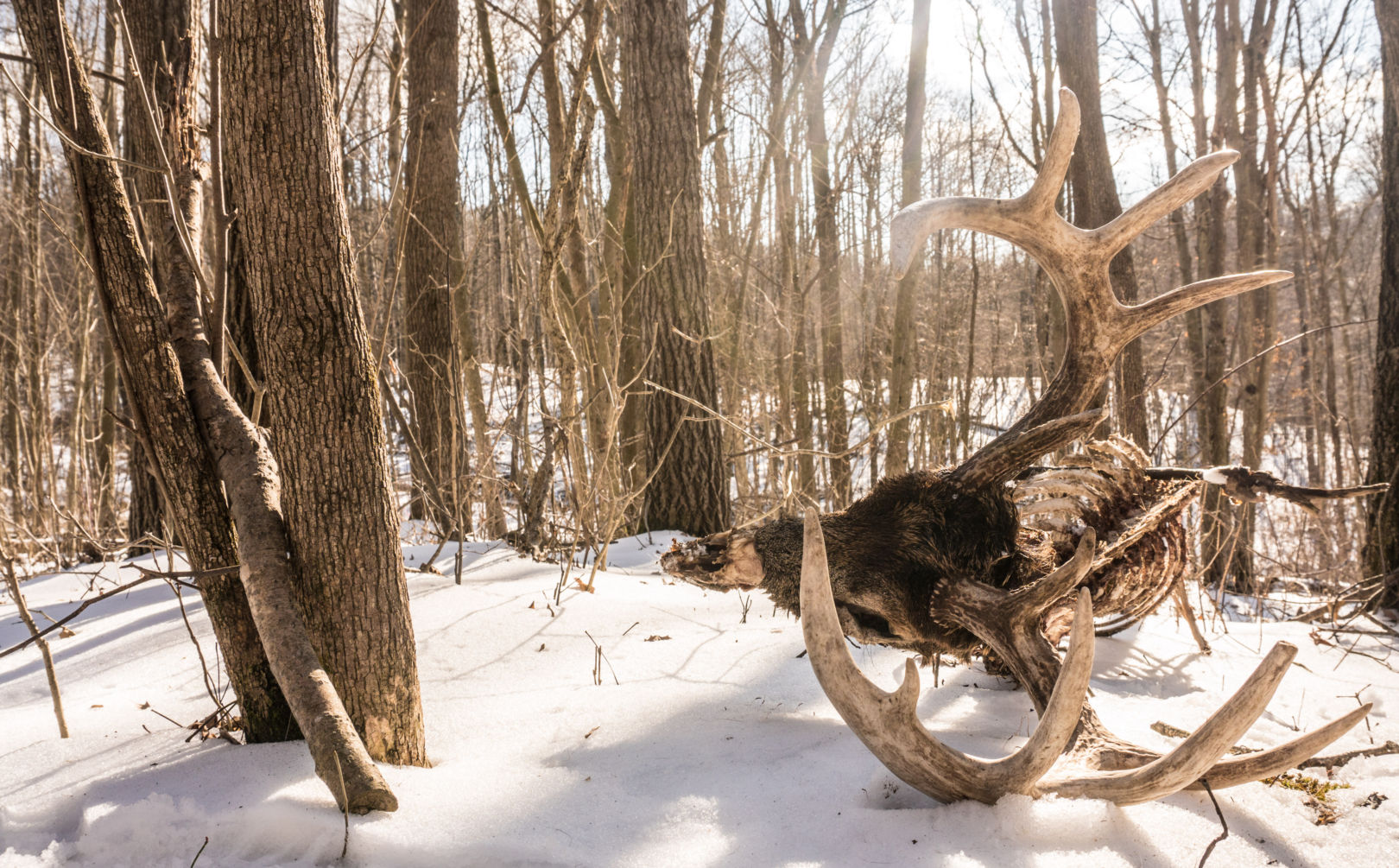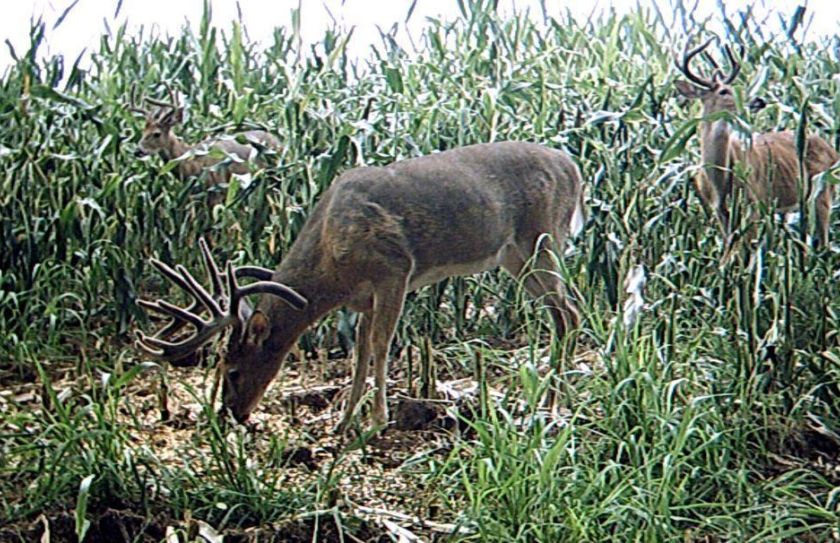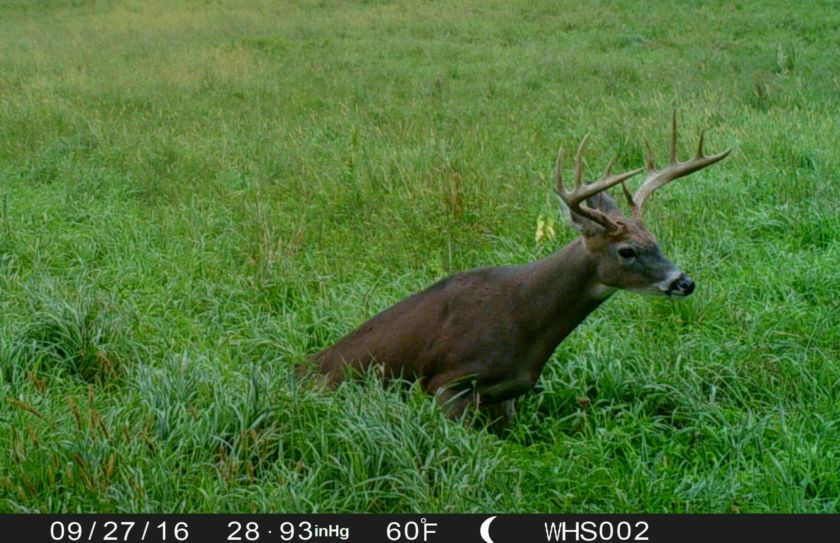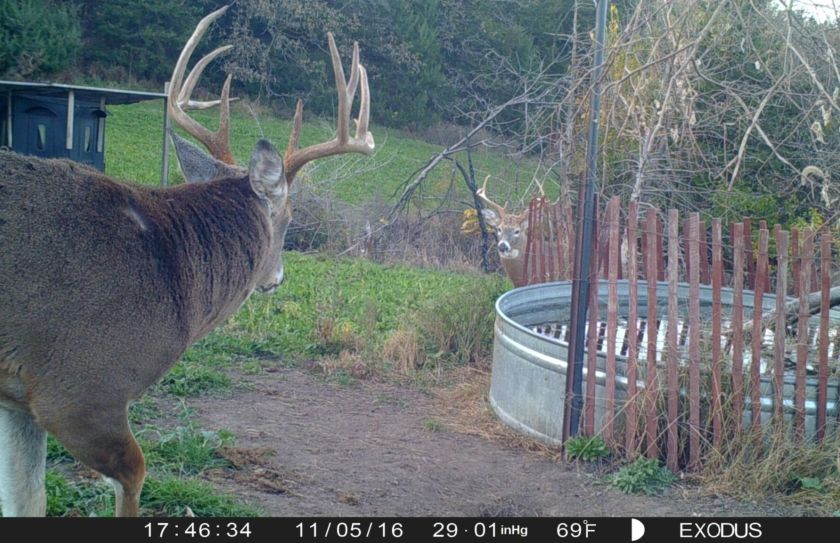
Too many buck scouting tips focus on the present and not the past. The year was 2013 and the great beast was dead. It was a moment of sadness, joy, accomplishment and relief; all rolled into one. Tears filled my eyes as I sat next to the buck and stared across the hollow with my good friend Colin sitting 10' to my right. It was over. My WI bow season was over and my two year quest to shoot the buck that fell to my arrow, was also over. The season had been long and it ended with the raw emotional build-up of a hunt for a particular buck that spanned nearly 8 weeks. But the hunt wasn't over just yet.
Far too many times the end of a quest for a giant is just that, an ending. However , one of the greatest buck scouting tips that I can give is that if you focus on the past, your future can become much brighter. It seems so simplistic to point out that by focusing on mature buck movements of the past you can predict future movements; and it is a pretty simple concept. But the information that you can glean from a particular mature buck kill can extend to much greater and more rewarding depths. There are 5 important scouting strategies that some of my greatest buck hunts have taught me and I suspect if you take the time to reflect on the past there is a wealth of information that you can learn as well!
Last fall, I was lucky enough to hunt and harvest this great buck using the strategies listed below..
1) Layered Buck Sign:
One of the best aspects of fully understanding the movements of your latest buck kill, is when that sign is complimented by the obvious historical patterns of past bucks. The movements of mature bucks are not really that much of a mystery. They move through and along the most interior and hidden portions of the habitat, while maintaining a level of safety and security that they not only crave, but need. Afterall, a mature buck does not become mature without adding a great deal of precautions to his daily patterns. The more years of sign that you can find to indicate a particular mature buck travel corridor or bedding area, the more you can rely on those same portions of the habitat to reveal new buck use in the future. Several mature bucks that I have been able kneel beside and thank the good Lord for, have directly followed the exact patterns of previous mature bucks. In fact I count on it!
2) Repeating Habitat Features:
You can't expect buck patterns to repeat unless the features of the habitat stay the same. Are the same afternoon food sources positioned in the same locations? What about cover changes or exterior hunter intrusions? The entire daily movement of deer is based on the transitions of daytime bedding areas to afternoon destination food sources. If the bedding area and food source stays the same, so will the movements of a mature buck that eventually fills that same slot of deer usage. This is why it is critical that you maintain bedding areas and food sources for not just years to come, but for decades to come. Rotational crop plantings and timber cuttings can have a drasticly negative impact for you to not only establish consistent daily lines of deer movements, but to be able to find consistent hunting success.
3) Practice Makes Perfect:
Hunting consistent daily patterns of deer movement that contain a strong indication of annual mature buck use, allows you to hone in on a successful approach for the given location. Often mature bucks have given me multiple years to practice refining my approach for an eventual shot opportunity. Whether it was the result of mistakes that I made (misses-woops!) or the opportunity to pass a particular younger buck several times over 1-2 years or more, the more I have studied the past, the higher the level of precision I have been able to apply to the future.
4) Years Forgotten:
The more I hunt, the more I rely on the historical basis of these buck scouting tips. The historical accumlulation of sign and dead bucks decades old, allows a hunter to take a few years off from a particular pattern and then take advantage of the movement when the present sign and timing is right. Have you ever had a favorite location on public land? Even if many years have gone by, if the habitat and hunting pressure conditions have remained the same, the mature buck movements most likely have as well.
5) Other Hunter's Scouting Efforts:
It pays to glean as much information as possible from anybody and everybody willing to share about the historical movements on the lands that you hunt. Even information from decades ago, can reveal the future movements of bucks. Asside from showing a great deal of respect for the hunters that have come before you, the information that they may be willing to share, can offer an entertainingly priceless combination that shouldn't be missed.
Conclusion
Whether you are sad, happy or proud or all 3, it is easy to get caught up in the moment. However, the moment you are saying a quiet thank you next to an expired beast, is the exact time to accurately reflect on the precise buck movements of your latest hunt. Not only should you relate your observations to the current hunt, but to the past indications of sign and buck scouting efforts of yourself and others (if possible). Reflecting on past buck patterns is not a new concept, but make sure to consider the amount of depth that can be applied to your future hunting endeavors.


